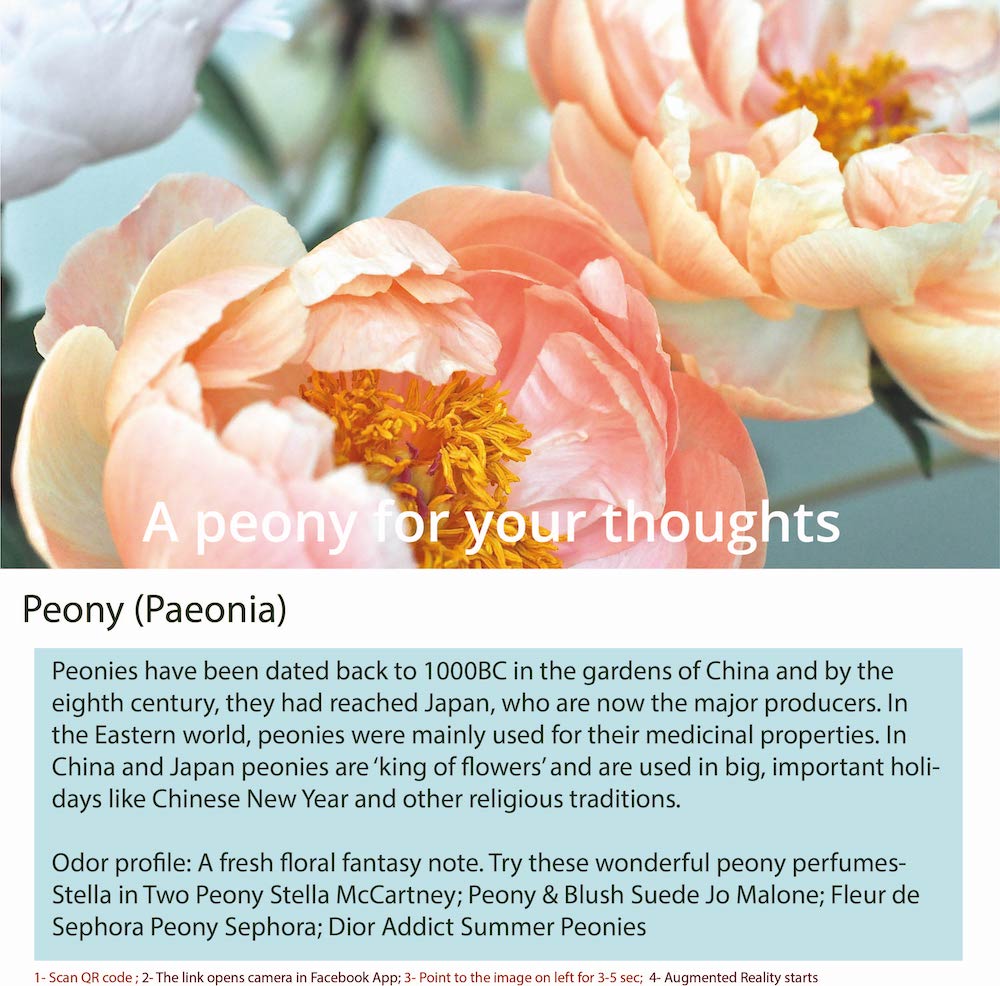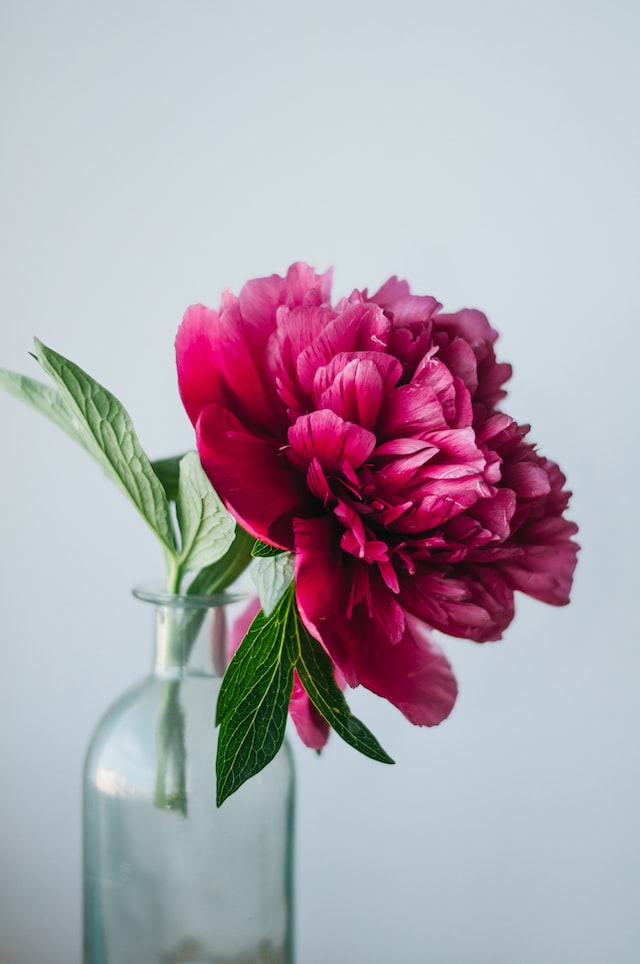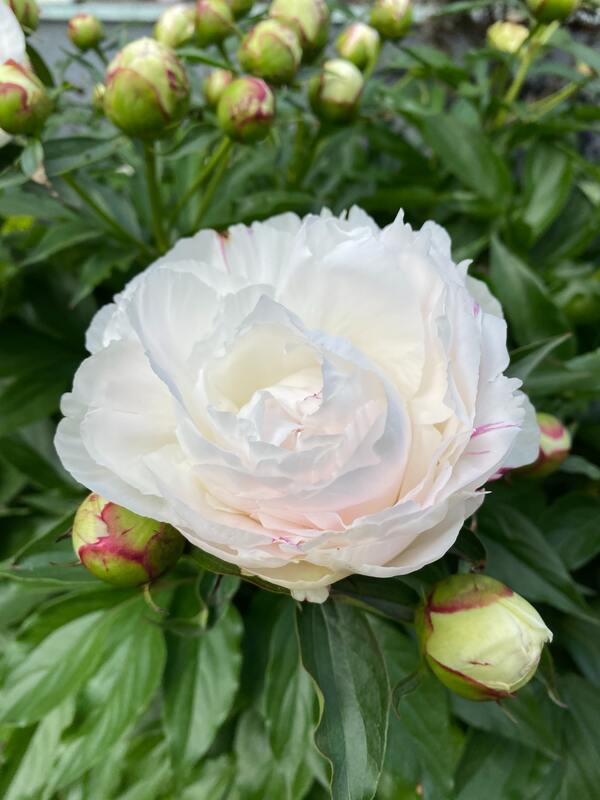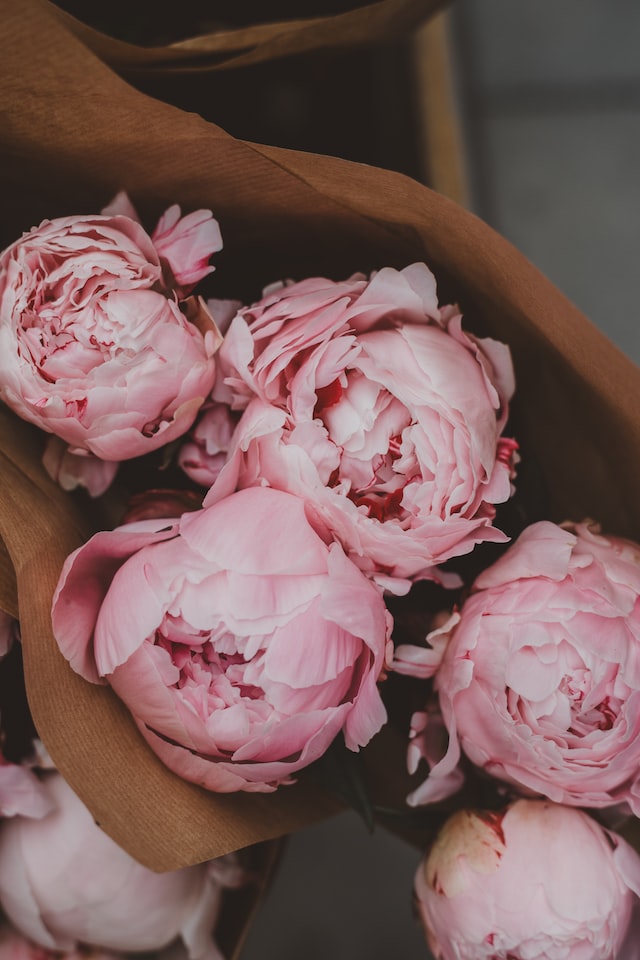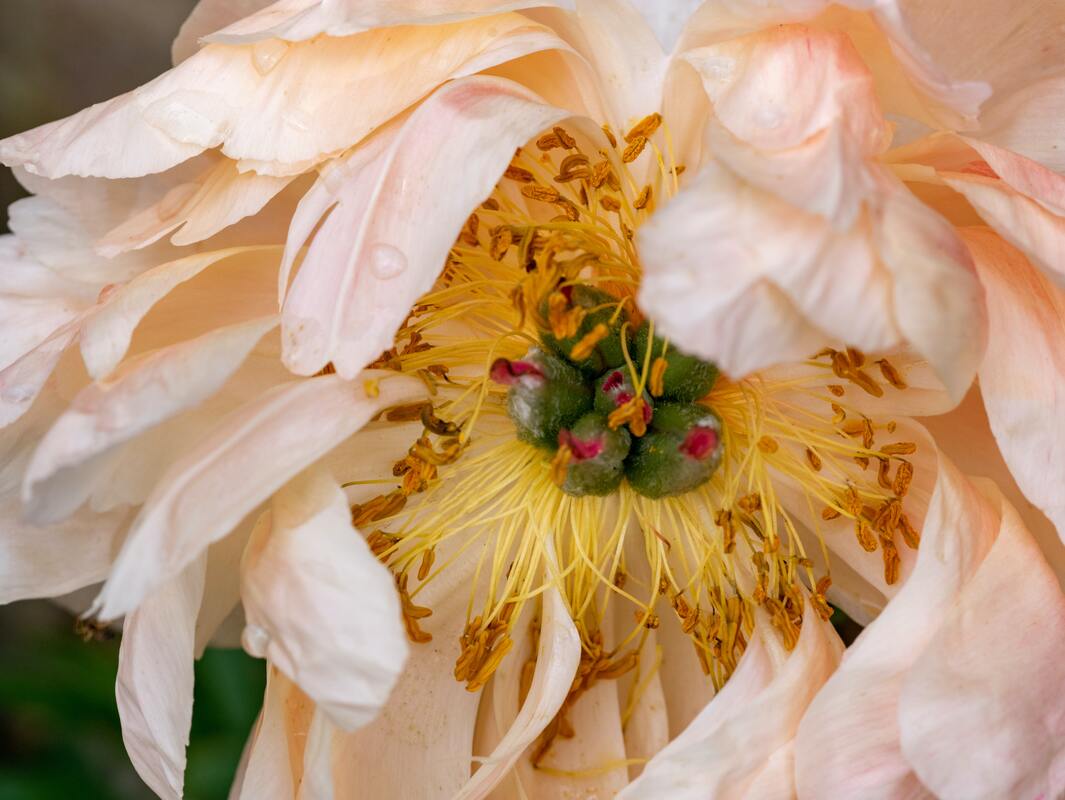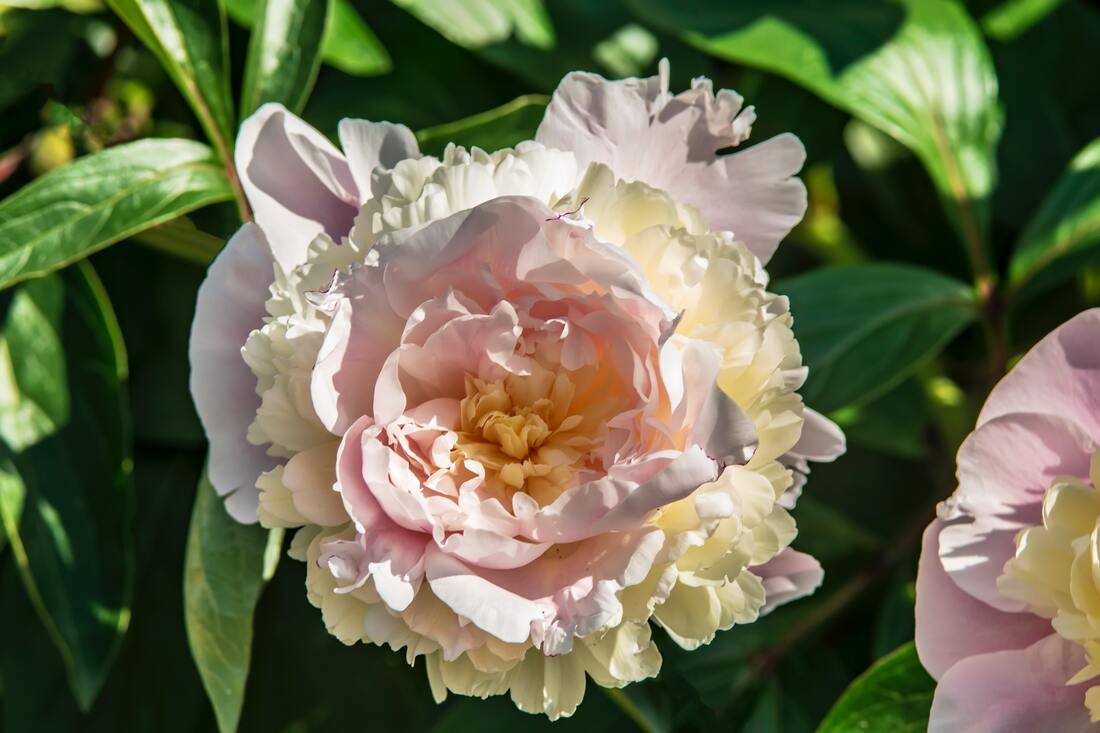Unveiling Our Rich Lush Perfume Oil
Peony: The Majestic Blooms of Beauty, Fragrance, and Healing
Introduction: Peony, with its majestic and enchanting blooms, is a treasured flower that has captivated people around the world for centuries. Scientifically known as Paeonia, this exquisite flower belongs to the Paeoniaceae family and is celebrated for its breathtaking beauty, delightful fragrance, and potential therapeutic properties. From inspiring perfumers with its alluring scent to offering potential benefits in therapeutic oils and traditional medicine, peony is more than just a flower. This essay delves into the captivating world of peony, encompassing its presence in perfumes, therapeutic oils, food, medicinal systems, historical significance, and intriguing fun facts about this extraordinary and cherished flower.
The Enchantment of Peony: Peony is renowned for its large and showy blooms, which come in a wide array of colors, including pink, white, red, and yellow. Its ruffled petals and captivating fragrance have earned it a place as one of the most beloved flowers in gardens, bouquets, and floral arrangements.
Perfumes and Fragrance: Peony is a popular choice in the world of perfumery due to its enchanting fragrance. Its sweet and floral scent is often used in perfumes to evoke a sense of romance and femininity. Peony-inspired fragrances are usually fresh, delicate, and evocative of a spring garden in full bloom.
Therapeutic Oils and Aromatherapy: Peony essential oil is not widely available, but some therapeutic oils with floral characteristics, such as rose or geranium essential oil, may be used in aromatherapy for relaxation and emotional balance.
Medicinal Applications: In traditional Chinese medicine, peony has a long history of use for its potential medicinal properties. The roots of certain peony species, such as Paeonia lactiflora, are used in traditional remedies for their potential anti-inflammatory and pain-relieving effects. Peony is also believed to have potential calming and soothing properties.
Culinary Uses: Peony is not commonly used as a culinary ingredient. However, in some cultures, peony petals are used as a decorative element in salads and desserts, adding a touch of beauty and elegance to the dishes.
Historical Significance: Peony has a rich history that dates back to ancient civilizations. It has been revered in Chinese culture for over 2,000 years and is considered a symbol of prosperity, honor, and beauty. Peony is often associated with royalty and was a favorite flower of the emperors in ancient China. In Western cultures, peony is a popular flower for weddings and is often seen as a symbol of love and romance.
Fun and Crazy Facts:
Peony, with its majestic blooms and alluring fragrance, is a captivating and cherished flower that continues to enchant people with its beauty and potential therapeutic properties. From its presence in perfumes to its use in traditional medicine and cultural significance, peony offers a wealth of enjoyment and cultural symbolism. As we admire the breathtaking beauty and historical significance of peony and explore its potential in perfumery and aromatherapy, we are reminded of the enduring allure and timeless charm of this extraordinary flower that has left an indelible mark on gardens, cultures, and hearts throughout history.
Introduction: Peony, with its majestic and enchanting blooms, is a treasured flower that has captivated people around the world for centuries. Scientifically known as Paeonia, this exquisite flower belongs to the Paeoniaceae family and is celebrated for its breathtaking beauty, delightful fragrance, and potential therapeutic properties. From inspiring perfumers with its alluring scent to offering potential benefits in therapeutic oils and traditional medicine, peony is more than just a flower. This essay delves into the captivating world of peony, encompassing its presence in perfumes, therapeutic oils, food, medicinal systems, historical significance, and intriguing fun facts about this extraordinary and cherished flower.
The Enchantment of Peony: Peony is renowned for its large and showy blooms, which come in a wide array of colors, including pink, white, red, and yellow. Its ruffled petals and captivating fragrance have earned it a place as one of the most beloved flowers in gardens, bouquets, and floral arrangements.
Perfumes and Fragrance: Peony is a popular choice in the world of perfumery due to its enchanting fragrance. Its sweet and floral scent is often used in perfumes to evoke a sense of romance and femininity. Peony-inspired fragrances are usually fresh, delicate, and evocative of a spring garden in full bloom.
Therapeutic Oils and Aromatherapy: Peony essential oil is not widely available, but some therapeutic oils with floral characteristics, such as rose or geranium essential oil, may be used in aromatherapy for relaxation and emotional balance.
Medicinal Applications: In traditional Chinese medicine, peony has a long history of use for its potential medicinal properties. The roots of certain peony species, such as Paeonia lactiflora, are used in traditional remedies for their potential anti-inflammatory and pain-relieving effects. Peony is also believed to have potential calming and soothing properties.
Culinary Uses: Peony is not commonly used as a culinary ingredient. However, in some cultures, peony petals are used as a decorative element in salads and desserts, adding a touch of beauty and elegance to the dishes.
Historical Significance: Peony has a rich history that dates back to ancient civilizations. It has been revered in Chinese culture for over 2,000 years and is considered a symbol of prosperity, honor, and beauty. Peony is often associated with royalty and was a favorite flower of the emperors in ancient China. In Western cultures, peony is a popular flower for weddings and is often seen as a symbol of love and romance.
Fun and Crazy Facts:
- Longevity: Peony is known for its longevity as a cut flower, often remaining fresh and vibrant for several days after being cut.
- Greek Mythology: In Greek mythology, the peony is named after Paeon, a student of Asclepius, the god of medicine. Asclepius became jealous of Paeon's healing abilities and threatened to kill him. To save Paeon, Zeus turned him into the peony flower.
- Peony Festivals: Various regions around the world, including China and the United States, hold peony festivals to celebrate the bloom and its cultural significance.
- Tree Peonies: Some peony species, known as tree peonies, can grow into shrubs that reach several feet in height and produce large, woody stems.
- Traditional Medicine: Peony root is used in traditional Chinese medicine formulations, such as "Shao Yao Gan Cao Tang," which is believed to support the body's natural balance.
Peony, with its majestic blooms and alluring fragrance, is a captivating and cherished flower that continues to enchant people with its beauty and potential therapeutic properties. From its presence in perfumes to its use in traditional medicine and cultural significance, peony offers a wealth of enjoyment and cultural symbolism. As we admire the breathtaking beauty and historical significance of peony and explore its potential in perfumery and aromatherapy, we are reminded of the enduring allure and timeless charm of this extraordinary flower that has left an indelible mark on gardens, cultures, and hearts throughout history.
To experience augmented reality, please open the Facebook-app using QR code and point to the image below
Experience the Romance of Peony Aroma
A peony is a type of flowering plant in the genus Paeonia, which includes both herbaceous plants and tree peonies. They are known for their large, showy flowers that come in a variety of colors including pink, red, white, and yellow. Peonies are native to Asia and Europe and have been cultivated for thousands of years for their beauty and medicinal properties. They are a popular choice for gardens and are often used in cut flower arrangements.
Peonies have been a popular symbol in various forms of pop culture throughout history. In Chinese culture, peonies are considered a symbol of wealth, prosperity, and nobility. They are often depicted in Chinese art and literature, and are the floral symbol of the city of Luoyang, China, which is known as the "Peony City."
In literature, peonies have been referenced in many works, including the famous Chinese novel "Dream of the Red Chamber" where they were used to symbolize the main character's beauty and wealth.
In western culture, peonies have been used in various forms of artwork, such as paintings, and have been popular in gardens and flower arrangements. They have also been used in fashion, with peony-patterned clothing and accessories becoming popular. They have also been used in tattoos as a symbol of beauty and grace.
Peony flowers have also been used in perfumes, and the flower's name is used in the name of some of the most popular perfumes.
In recent years, peony has become a popular flower in wedding bouquet and flower arrangements, due to its large size and various colors.
Peonies have been a popular symbol in various forms of pop culture throughout history. In Chinese culture, peonies are considered a symbol of wealth, prosperity, and nobility. They are often depicted in Chinese art and literature, and are the floral symbol of the city of Luoyang, China, which is known as the "Peony City."
In literature, peonies have been referenced in many works, including the famous Chinese novel "Dream of the Red Chamber" where they were used to symbolize the main character's beauty and wealth.
In western culture, peonies have been used in various forms of artwork, such as paintings, and have been popular in gardens and flower arrangements. They have also been used in fashion, with peony-patterned clothing and accessories becoming popular. They have also been used in tattoos as a symbol of beauty and grace.
Peony flowers have also been used in perfumes, and the flower's name is used in the name of some of the most popular perfumes.
In recent years, peony has become a popular flower in wedding bouquet and flower arrangements, due to its large size and various colors.
Enhance Your Aura with Peony Perfume Oil
Peonies have been a popular subject in art throughout history, particularly in Chinese, Japanese and European art.
In Chinese art, peonies have been depicted in paintings, pottery, and textiles for thousands of years, and are considered a symbol of wealth, nobility, and good fortune. Peonies are often depicted in Chinese paintings and prints, particularly in the traditional style of Chinese painting known as "Shan Shui" (mountain and water) landscape paintings. The flower is also a popular subject in Chinese porcelain and textiles.
In Japan, peonies have been depicted in art, particularly in traditional Japanese painting and prints, known as "Ukiyo-e." They were often used to symbolize the fleeting nature of beauty and the impermanence of life.
In European art, peonies have been depicted in paintings, particularly in the works of Dutch and French artists. They were often used to symbolize love and romance, and have been featured in many still life paintings.
Peonies have also been depicted in contemporary art, and continue to be a popular subject for artists today. They are often featured in photography, sculpture, and mixed media works.
Overall, Peony have been depicted in art throughout the history, and it's a subject that has been used to express the beauty, wealth and the fleeting nature of life.
In Chinese art, peonies have been depicted in paintings, pottery, and textiles for thousands of years, and are considered a symbol of wealth, nobility, and good fortune. Peonies are often depicted in Chinese paintings and prints, particularly in the traditional style of Chinese painting known as "Shan Shui" (mountain and water) landscape paintings. The flower is also a popular subject in Chinese porcelain and textiles.
In Japan, peonies have been depicted in art, particularly in traditional Japanese painting and prints, known as "Ukiyo-e." They were often used to symbolize the fleeting nature of beauty and the impermanence of life.
In European art, peonies have been depicted in paintings, particularly in the works of Dutch and French artists. They were often used to symbolize love and romance, and have been featured in many still life paintings.
Peonies have also been depicted in contemporary art, and continue to be a popular subject for artists today. They are often featured in photography, sculpture, and mixed media works.
Overall, Peony have been depicted in art throughout the history, and it's a subject that has been used to express the beauty, wealth and the fleeting nature of life.
Peony fun facts:
- Peonies are long-lived perennials, and can live for over 50 years with proper care.
- Peony flowers can be as large as 10 inches in diameter.
- Peonies have a sweet, fragrant smell that is often used in perfumes and other fragrant products.
- Peonies are often used in traditional Chinese medicine to treat a variety of ailments such as anxiety and skin conditions.
- The peony is the state flower of Indiana, USA.
- There are over 30 species of peonies, which vary in color and size.
- Peonies are popular wedding flowers, and are often used in bridal bouquets and floral arrangements.
- Peonies are native to Asia and Europe, but are now grown all over the world.
- The name "peony" is derived from the Greek word "paeon," which refers to a physician of the gods in Greek mythology.
- Peonies are the birth flower for the month of May.
- Peonies are known to be a symbol of wealth and prosperity and have been often used in Chinese and Japanese art as symbols of nobility and good fortune.
Unveiling the Art of Perfume Oils
The scent of peonies can vary depending on the variety, but generally they are known for their sweet, fragrant aroma. The scent is often described as a combination of floral and fruity notes, with hints of rose, jasmine, and cherry. Some varieties have a stronger fragrance than others, and the intensity of the scent can also vary depending on the time of day. Peonies typically have the strongest fragrance in the early morning or evening, and the scent can be strongest at the base of the petals.
Peony's scent is considered to be both sweet and delicate, and it's often compared with the aroma of roses, jasmine and fruits.
Peony essential oil is used in perfumery and aromatherapy as it's considered to have a calming and soothing effect, it's also used to create a sense of elegance and luxury.
Peony's scent is considered one of the most popular scents in the flower industry, and it's often used in perfumes, skincare, and candles.
Peony's scent is considered to be both sweet and delicate, and it's often compared with the aroma of roses, jasmine and fruits.
Peony essential oil is used in perfumery and aromatherapy as it's considered to have a calming and soothing effect, it's also used to create a sense of elegance and luxury.
Peony's scent is considered one of the most popular scents in the flower industry, and it's often used in perfumes, skincare, and candles.
The Luxurious Richness of Perfume Oils
There are many well-known brands that have included peony in their perfumes, such as:
- Chanel - Chanel No. 5 L'Eau has a peony scent as one of its notes.
- Dior - J'adore has a peony scent as one of its notes.
- Gucci - Flora by Gucci has a peony scent as one of its notes.
- Yves Saint Laurent - Black Opium has a peony scent as one of its notes.
- Jo Malone - Peony & Blush Suede has a peony scent as its main note.
- Tom Ford - Jasmine Rouge has a peony scent as one of its notes.
- Marc Jacobs - Daisy Dream has a peony scent as one of its notes.
- Elie Saab - Le Parfum has a peony scent as one of its notes.
- Bvlgari - Omnia Crystalline has a peony scent as one of its notes.
- Giorgio Armani - Si has a peony scent as one of its notes.
- Prada - L'Eau Ambree has a peony scent as one of its notes.
- Ralph Lauren - Romance has a peony scent as one of its notes.
- Tory Burch - Love Relentlessly has a peony scent as one of its notes.
- Versace - Bright Crystal has a peony scent as one of its notes.
- Lancome - La vie est belle has a peony scent as one of its notes.
- Burberry - My Burberry has a peony scent as one of its notes.
- Hermes - Terre d'Hermes has a peony scent as one of its notes.
- Givenchy - Ange ou Demon has a peony scent as one of its notes.
- Valentino - Valentina has a peony scent as one of its notes.
- Miu Miu - Miu Miu has a peony scent as one of its notes.
- Kenzo - Flower by Kenzo has a peony scent as its main note.
Join Scentopia, Sentosa's latest tourist attraction wonderful orchid scent crafting, fragrance tour, bridal shower or corporate team building which includes perfume making onsite and offsite, beach activities and more. We also serve primary school learning journey, secondary students and pupil on industrial excursions. Know more about our orchids perfume bar or therapeutic orchid scents and other wellness aromas. Conatct Perfume workshop or book a scent crafting session here.

